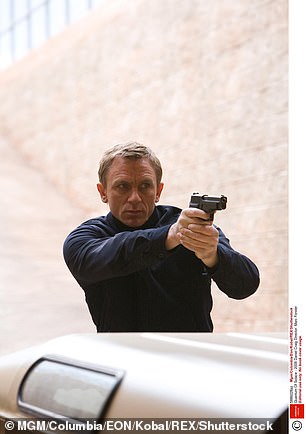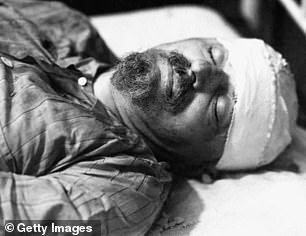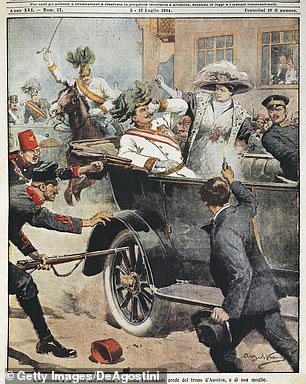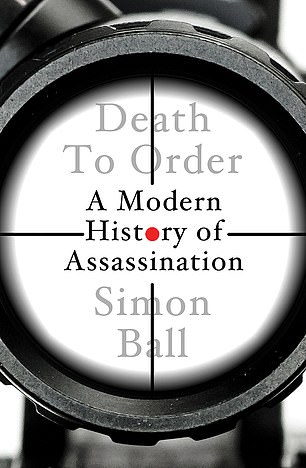Death To Order: A Modern History Of Assassination by Simon Ball (Yale £25, 464pp)
When it comes to the ‘exotic, tawdry, and very confusing’ subject of assassinations, there have been few lone wolves. Simon Ball’s exhaustive study shows that, behind every shot fired, there’s usually a complicated conspiracy.

The real assassins at play
Assassinations need a lot of organising – where to obtain the components, the battery packs for remote-controlled devices; how to design a car bomb, which when detonated will concentrate its force into the driver’s seat; how to field the necessary denials, lies and dissimulation. Ball confesses he had a hard time examining the historical record, as files have been lost, destroyed or redacted.
Assassins are of course ‘a staple of popular entertainment’, with characters and action heroes such as James Bond and Jason Bourne. Ian Fleming said of Bond, he’s ‘an efficient and not very attractive blunt instrument in the hands of government’, and the assassin’s task or motivation has always been to hasten regime change.
Even Queen Elizabeth II saw how ‘murder was an instrument of policy’. When Colonel Nasser, in 1955, was being a nuisance to the British over the Suez Canal, she said brightly, and no doubt with her tongue in her cheek, ‘I’m surprised nobody has found means of putting something in his coffee.’
Presidents, monarchs and political dignitaries have long been targets. Ball discusses how the killing of Archduke Franz Ferdinand at Sarajevo, in 1914, by Serb nationalists, precipitated the First World War. Everyone was spoiling for a scrap, the Austrians, Russians, Germans, French, British. ‘The assassination was the spark, but any spark would have done.’

Leon Trotsky: fatal victim of Josef Stalin
During the previous decades there had been innumerable sparks to persuade the British to leave India. In 1912, the Viceroy was riding on an elephant when a bomb was thrown, killing the umbrella bearer.
In Lahore, the assistant superintendent was killed instead of the superintendent, and the commandant of the Calcutta City Police had his car door blown off.
The perpetrators were Hindu extremists, who went after policemen, civil officials, intelligence officers, prosecution lawyers and magistrates. A judge was ‘shot in the head and died instantly at his own bench in his own courtroom’.
Little wonder many working for the Raj, ‘not particularly keen on being shot’, boarded ships returning to England.
Nearer home, in Ireland, by 1920 the IRA had assassinated 15 policemen, using semi-automatic pistols and Webley revolvers. They attacked Londoners who had connections with the Royal Irish Constabulary. A party playing golf in Kent came under fire. A field marshal was shot in Eaton Place in Belgravia. By the 1970s ‘Belfast was the assassination capital of Europe’, and IRA agents set forth to murder Ross McWhirter, Airey Neave and Lord Mountbatten.
‘Any fool can shoot a viceroy or a police inspector,’ it was said, and security was generally lax – except for the chieftains. In Russia, where assassination was ‘a revolutionary tactic’, the Bolsheviks could never stop arresting and purging members of their own side. Stalin was accompanied everywhere by his ‘security detail’. Paranoid about potential rivals, he’d have complete innocents tortured until they confessed to invented plots. In 1940, he ordered the liquidation of Trotsky, whose skull was impaled with an ice-pick in Mexico.

The assassination that started World War I
As for Hitler, in 1934 Daimler-Benz designed an assassination-proof car for the Fuhrer’s use, and he was surrounded by ‘a cohort of 450 men’, even when within fortified residences. He escaped bombs in cellars, bombs in planes. Retribution was swift. After Reinhard Heydrich, architect of the Holocaust, was killed in Prague, the Gestapo used ‘the foulest tortures’ to find culprits, killing the inhabitants of a village called Lidice, which had sheltered a radio operator.
Over in America, though Teddy Roosevelt boasted ‘he could wield a pistol to guarantee his own security’, in actuality presidents were guarded by ‘a cavalcade’ of secret servicemen, mounted police and CIA. The ‘protective screen’ to this day involves thousands of armed personnel. Not that this saved Kennedy – Ball intriguingly suggests Soviet involvement.
When it comes to the CIA, and what is euphemistically called their ‘Executive Action Capability’, it’s hard to know what to believe, when in documents they start mentioning the ‘neutralisation’ of ‘priority targets’. Did the agency really collaborate with the Mafia to remove Fidel Castro, who nevertheless lived to 90?

Death to Order is available now
Much of Death To Order reads like a Frederick Forsyth fiction, especially the chapter on France and the assassinations surrounding Algerian independence. There were 150 fatalities in southern France alone, a similar statistic in Paris. Death squads kidnapped victims, executed them, and threw the corpses in canals. ‘Bodies were regularly pulled from the Seine by the river authorities.’
De Gaulle’s Citroen was ambushed in 1962, the assassins using a full-bore military machine gun mounted on the back of a van. The general’s driver sped away. The leader of the assassination squad was executed in March the following year. All this inspired the classic Forsyth novel, Edward Fox film and Eddie Redmayne series The Day Of The Jackal.
Simon Ball has produced a thorough and gripping account of how humans are addicted to picking each other off. He is particularly acute on the political machinations behind the scenes and asks ‘uncomfortable questions about violence, appeasement, collaboration and persuasion’.
It is a sad fact that, when one mission has been accomplished, a new wave of murders begins. Our Empire over, the leaders of the newly independent nations immediately started assassinating each other. And because of ‘wide conspiracy and organisation’, Gandhi was killed by Hindus in India, principally because of his friendly talks with the prime minister of Pakistan and the leader of the Muslim League. Indira Gandhi was shot by her own bodyguards in 1984. Her son Rajiv Gandhi was killed in 1991 by ‘a young woman wearing a suicide vest’.
Israel calls its regular assassination of Palestinian leaders ‘mowing the grass’, a highly cynical phrase. Vladimir Putin runs ‘a state assassination campaign’, reliant on poisons, as the population of Salisbury knows. Ball’s book made me start seeing threats all around me. It’s a wonder any of us remains alive.











